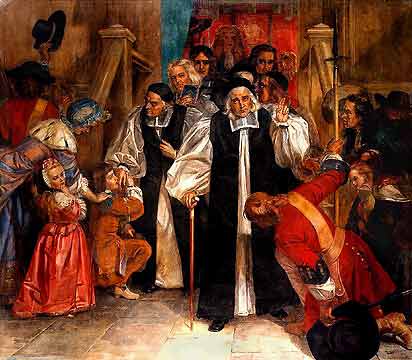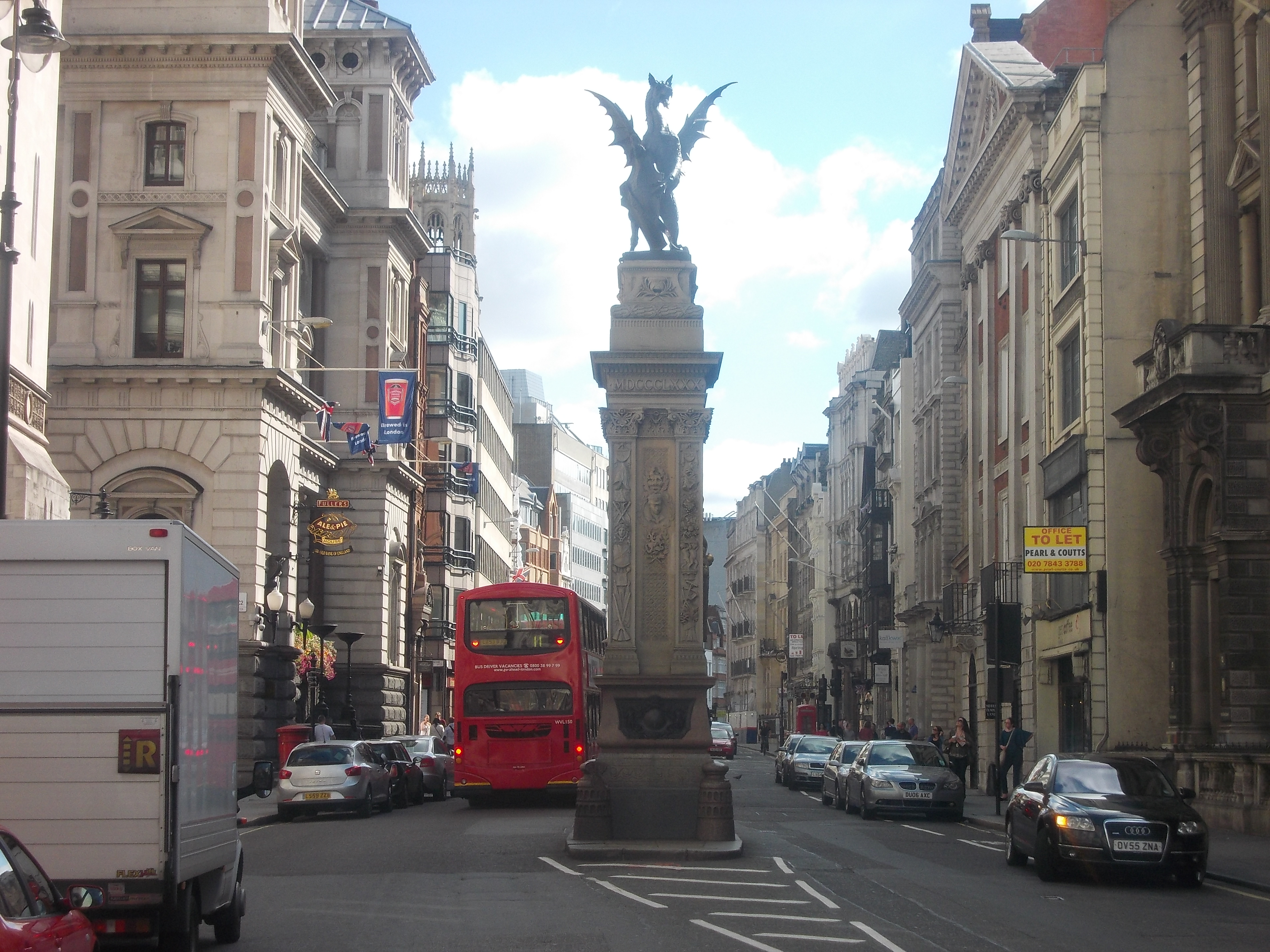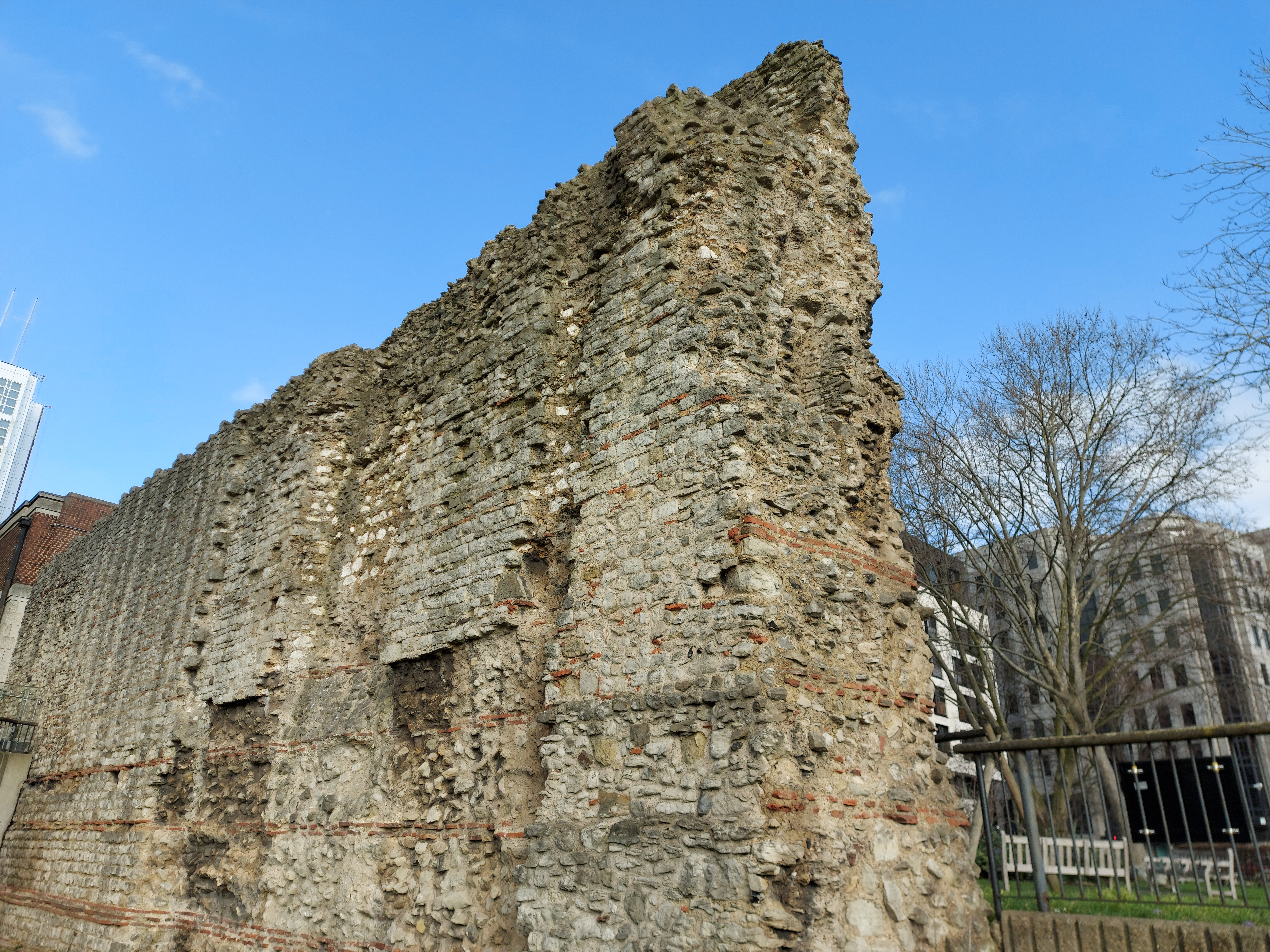|
Sir William Parkyns
Sir William Parkyns or Perkins (1649?–1696) was an English lawyer and Jacobitism, Jacobite conspirator, executed for high treason. Life The son of William Parkyns, a London merchant, he was born in London about 1649. He was admitted to the Inner Temple in 1671, and was called to the bar in 1675. He was knighted at Whitehall Palace on 10 June 1681. Parkyns acquired a good practice, and, inheriting wealth from his father, became prominent in the London as an adherent of the court party, an "abhorrer" at the time of the Exclusion Bill, and, after the Glorious Revolution, as an inveterate Jacobite. In fact, in order to retain his office as one of the six clerks in the Court of Chancery, he had taken the oath of allegiance to William III. After the death of Mary II of England, Queen Mary in 1695 Parkyns associated with Sir George Barclay, Robert Charnock, Captain George Porter (conspirator), George Porter, Cardell Goodman, "Scum" Goodman, and others, in their Jacobite assassination ... [...More Info...] [...Related Items...] OR: [Wikipedia] [Google] [Baidu] |
Jacobitism
Jacobitism (; gd, Seumasachas, ; ga, Seacaibíteachas, ) was a political movement that supported the restoration of the senior line of the House of Stuart to the Monarchy of the United Kingdom, British throne. The name derives from the first name of James II and VII, which in Latin translates as ''Jacobus (name), Jacobus''. When James went into exile after the November 1688 Glorious Revolution, the Parliament of England argued that he had abandoned the Kingdom of England, English throne, which they offered to his Protestant daughter Mary II, and her husband William III of England, William III. In April, the Convention of Estates (1689), Scottish Convention held that he "forfeited" the throne of Scotland by his actions, listed in the Articles of Grievances. The Revolution thus created the principle of a contract between monarch and people, which if violated meant the monarch could be removed. Jacobites argued monarchs were appointed by God, or Divine right of kings, divine right, a ... [...More Info...] [...Related Items...] OR: [Wikipedia] [Google] [Baidu] |
Sir Thomas Prendergast, 1st Baronet
Brigadier-General Sir Thomas Prendergast, 1st Baronet ( 1660 – 11 September 1709) was an Irish politician and soldier. Early life He was the son of Thomas Prendergast (d. 1725) of Croane, County Limerick, a small Catholic landowner, and Eleanor Condon, daughter of Daniel Condon. Little is known of his early life. His family suffered greatly under Oliver Cromwell, and he is thought to have grown up in poverty. Jonathan Swift, who detested him, called him the son of a cottager who narrowly escaped being hanged for stealing cows. However, his friends esteemed him as a man of honour and ability. Career On 15 July 1699 he was created a baronet, of Gort, in the County of Galway. He received his baronetage for informing King William III of the Jacobite plot to ambush the King's coach at Turnham Green. The plot had been conceived by Sir George Barclay, who landed at Romney in January 1696 intent upon assassinating the King. Prendergast was called upon on Thursday 13 February 1696 ... [...More Info...] [...Related Items...] OR: [Wikipedia] [Google] [Baidu] |
Bushey
Bushey is a town in the Hertsmere borough of Hertfordshire in the East of England. It has a population of over 25,000 inhabitants. Bushey Heath is a large neighbourhood south east of Bushey on the boundary with the London Borough of Harrow reaching elevations of above sea level. History The first written record of Bushey is its entry in the Domesday Book of 1086, which describes a small agricultural village named 'Bissei' (which later became 'Biss(h)e' and then 'Bisheye' during the 12th century). However, chance archaeological findings of Stone Age tools provide evidence that the area was inhabited as far back as the Palaeolithic period. The town also has links to the Roman Britain, Roman occupation of Great Britain, Britain, with the main road running through it being Roman; sites of possible Roman villas being unearthed in the area; and a Roman tessellated pavement was discovered near Chiltern Avenue. The origin of the town's name is not fully known. In terms of the origi ... [...More Info...] [...Related Items...] OR: [Wikipedia] [Google] [Baidu] |
Church Of England
The Church of England (C of E) is the established Christian church in England and the mother church of the international Anglican Communion. It traces its history to the Christian church recorded as existing in the Roman province of Britain by the 3rd century and to the 6th-century Gregorian mission to Kent led by Augustine of Canterbury. The English church renounced papal authority in 1534 when Henry VIII failed to secure a papal annulment of his marriage to Catherine of Aragon. The English Reformation accelerated under Edward VI's regents, before a brief restoration of papal authority under Queen Mary I and King Philip. The Act of Supremacy 1558 renewed the breach, and the Elizabethan Settlement charted a course enabling the English church to describe itself as both Reformed and Catholic. In the earlier phase of the English Reformation there were both Roman Catholic martyrs and radical Protestant martyrs. The later phases saw the Penal Laws punish Ro ... [...More Info...] [...Related Items...] OR: [Wikipedia] [Google] [Baidu] |
William Snatt
William Snatt (1645 – 1721) was an English nonjuring clergyman, who came to prominence after a failed Jacobite plot. Life Born at Lewes, he was the son of Edward Snatt, minister and usher of the Southover free school there; in 1629 John Evelyn the diarist was a pupil. William Snatt matriculated from Magdalen College, Oxford, on 14 December 1660, and graduated B.A. in 1664. He was collated to the rectory of Denton, East Sussex, in 1672, obtained a prebend in Chichester Cathedral in 1675, and the rectory of Cliffe St. Thomas, Sussex, in the same year. He subsequently became vicar of Seaford in 1679, and of Cuckfield and Bishopstone in 1681. A devout and consistent high churchman, Snatt resigned all his preferments rather than take the oaths to William III and Mary II. He went to London, where he found friends in Hilkiah Bedford and Jeremy Collier. Like other nonjurors, he incurred the suspicion of popery. This hostile feeling was confirmed in April 1696, when, in company wi ... [...More Info...] [...Related Items...] OR: [Wikipedia] [Google] [Baidu] |
Jeremy Collier
Jeremy Collier (; 23 September 1650 – 26 April 1726) was an English theatre critic, non-juror bishop and theologian. Life Born Jeremiah Collier, in Stow cum Quy, Cambridgeshire, Collier was educated at Caius College, University of Cambridge, receiving the BA (1673) and MA (1676). A supporter of James II, he refused, as a nonjuror (see Nonjuring schism) to take the oath of allegiance to William III and Mary II after the Glorious Revolution. Furthering his obvious disapproval of the new monarchs, he publicly absolved two Jacobites who had conspired to assassinate the King and Queen. In 1713 he was consecrated a non-juror bishop by George Hickes and two Scottish bishops, Archibald Campbell and James Gadderar. Works Collier was the primus of the nonjuring line and a strong supporter of the four usages. (see Nonjuring schism) In the years following the Revolution he wrote a series of tracts questioning the legitimacy of the new monarchs and the deprival of the Non-juror bis ... [...More Info...] [...Related Items...] OR: [Wikipedia] [Google] [Baidu] |
Nonjuring Schism
The Nonjuring schism refers to a split in the State religion, established churches of England, Scotland and Ireland, following the deposition and exile of James II of England, James II and VII in the 1688 Glorious Revolution. As a condition of office, clergy were required to swear allegiance to the ruling monarch; for various reasons, some refused to take the oath to his successors William III of England, William III and II and Mary II of England, Mary II. These individuals were referred to as ''Non-juring'', from the Latin verb ''iūrō'', or ''jūrō'', meaning "to swear an oath". In the Church of England, an estimated 2% of priests refused to swear allegiance in 1689, including nine bishops. Ordinary clergy were allowed to keep their positions but after efforts to compromise failed, the six surviving bishops were removed in 1691. The schismatic Non-Juror Church was formed in 1693 when William Lloyd (bishop of Norwich), Bishop Lloyd appointed his own bishops. His action was opp ... [...More Info...] [...Related Items...] OR: [Wikipedia] [Google] [Baidu] |
Temple Bar, London
Temple Bar is a building that was until 1878 the principal ceremonial entrance to the City of London from the City of Westminster; since relocated, it is today the home of the Worshipful Company of Chartered Architects and an education centre focused on architecture and heritage in the City of London. In the middle ages, London expanded city jurisdiction beyond its walls to gates, called ‘bars’, which were erected across thoroughfares. To the west of the City of London, the bar was located in the area known as the Temple. Temple Bar was situated on the historic royal ceremonial route from the Tower of London to the Palace of Westminster, the two chief residences of the medieval English monarchs, and from the Palace of Westminster to St Paul's Cathedral. The road east of where Temple Bar once stood and within the City is Fleet Street, while the road to the west, in Westminster, is The Strand. The Corporation of the City of London formerly erected a barrier to regulate trade ... [...More Info...] [...Related Items...] OR: [Wikipedia] [Google] [Baidu] |
Sir John Friend
Sir John Friend or Freind (died 1696), was an English conspirator. Life Friend was the eldest son of John Friend, a brewer, who resided in the precinct of St. Katharine's, near the Tower of London. He followed his father's business. He built the "stately brewhouse" called the Phœnix in the Minories, and amassed considerable wealth. For a while he maintained a fine country residence at Hackney. In 1683 Friend was appointed a commissioner of excise. As Colonel of the Honourable Artillery Company (HAC), Friend, on occasion of their feast, 26 June 1684, had the honour of entertaining James, Duke of York and Prince George of Denmark at a banquet in the Artillery Ground. Though a Protestant, he remained a faithful adherent of James II, by whom he was knighted 3 August 1685. After the Glorious Revolution Friend was expelled from the HAC at a meeting held in February 1689–90, and lost his seat at the board of excise. However, by a treasury order dated 18 December 1690, he was rel ... [...More Info...] [...Related Items...] OR: [Wikipedia] [Google] [Baidu] |
Tower Hill
Tower Hill is the area surrounding the Tower of London in the London Borough of Tower Hamlets. It is infamous for the public execution of high status prisoners from the late 14th to the mid 18th century. The execution site on the higher ground north-west of the Tower of London moat is now occupied by Trinity Square Gardens. Tower Hill rises from the north bank of the River Thames to reach a maximum height of 14.5 metres (48 ft) Ordnance Datum. The land was historically part of the Liberties of the Tower of London, an area the Tower authorities controlled to keep clear of any development which would reduce the defensibility of the Tower. Building has encroached to a degree, but a legacy of this control is that much of the hill is still open. The hill includes land on either side of the London Wall, a large remnant of which is visible. Definition Generally speaking, the name Tower Hill informally applies to those parts of the Liberties of the Tower of London, Tower ... [...More Info...] [...Related Items...] OR: [Wikipedia] [Google] [Baidu] |
Bishop Of Ely
The Bishop of Ely is the ordinary of the Church of England Diocese of Ely in the Province of Canterbury. The diocese roughly covers the county of Cambridgeshire (with the exception of the Soke of Peterborough), together with a section of north-west Norfolk and has its episcopal see in the City of Ely, Isle of Ely in Cambridgeshire, where the seat is located at the Cathedral Church of the Holy Trinity. The current bishop is Stephen Conway, who signs ''+Stephen Elien:'' (abbreviation of the Latin adjective ''Eliensis'', meaning "of Ely"). The diocesan bishops resided at the Bishop's Palace, Ely until 1941; they now reside in Bishop's House, the former cathedral deanery. Conway became Bishop of Ely in 2010, translated from the Diocese of Salisbury where he was Bishop suffragan of Ramsbury. The roots of the Diocese of Ely are ancient and the area of Ely was part of the patrimony of Saint Etheldreda. Prior to the elevation of Ely Cathedral as the seat of the diocese, it existe ... [...More Info...] [...Related Items...] OR: [Wikipedia] [Google] [Baidu] |






